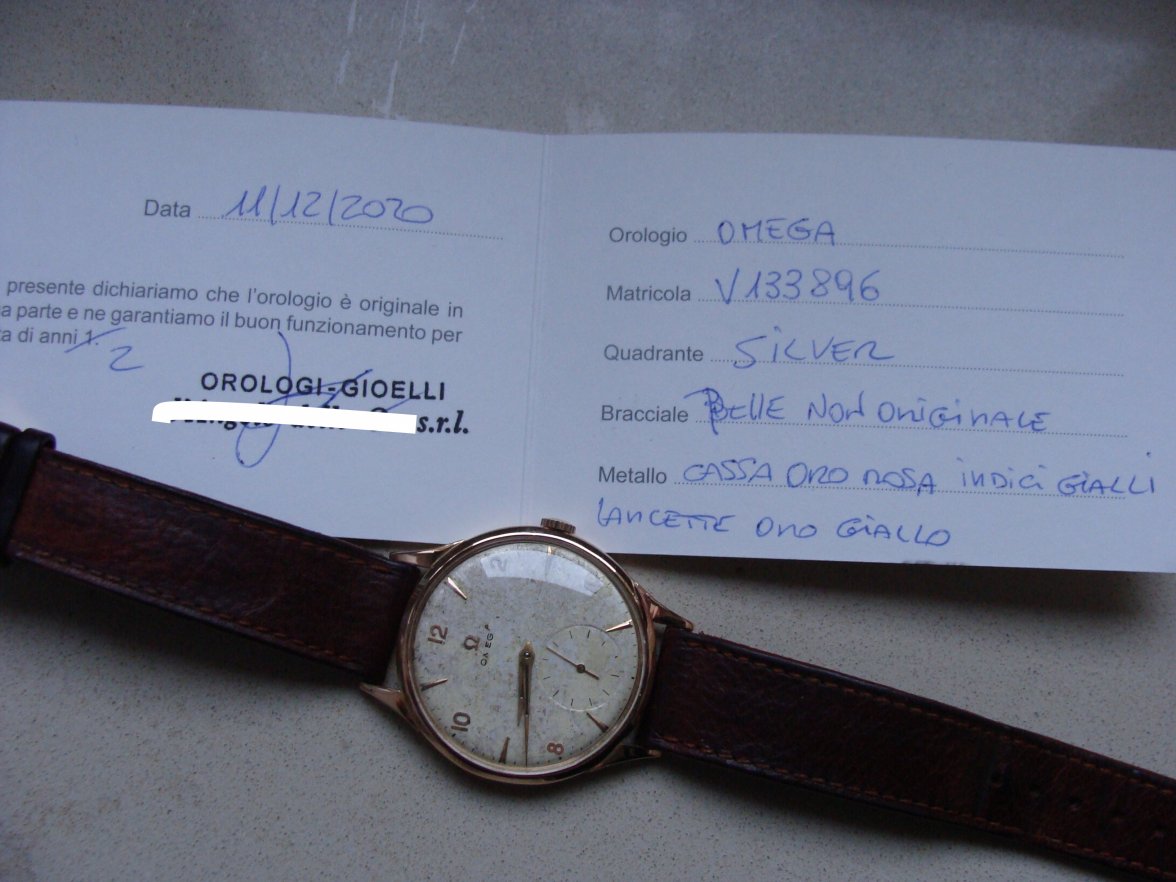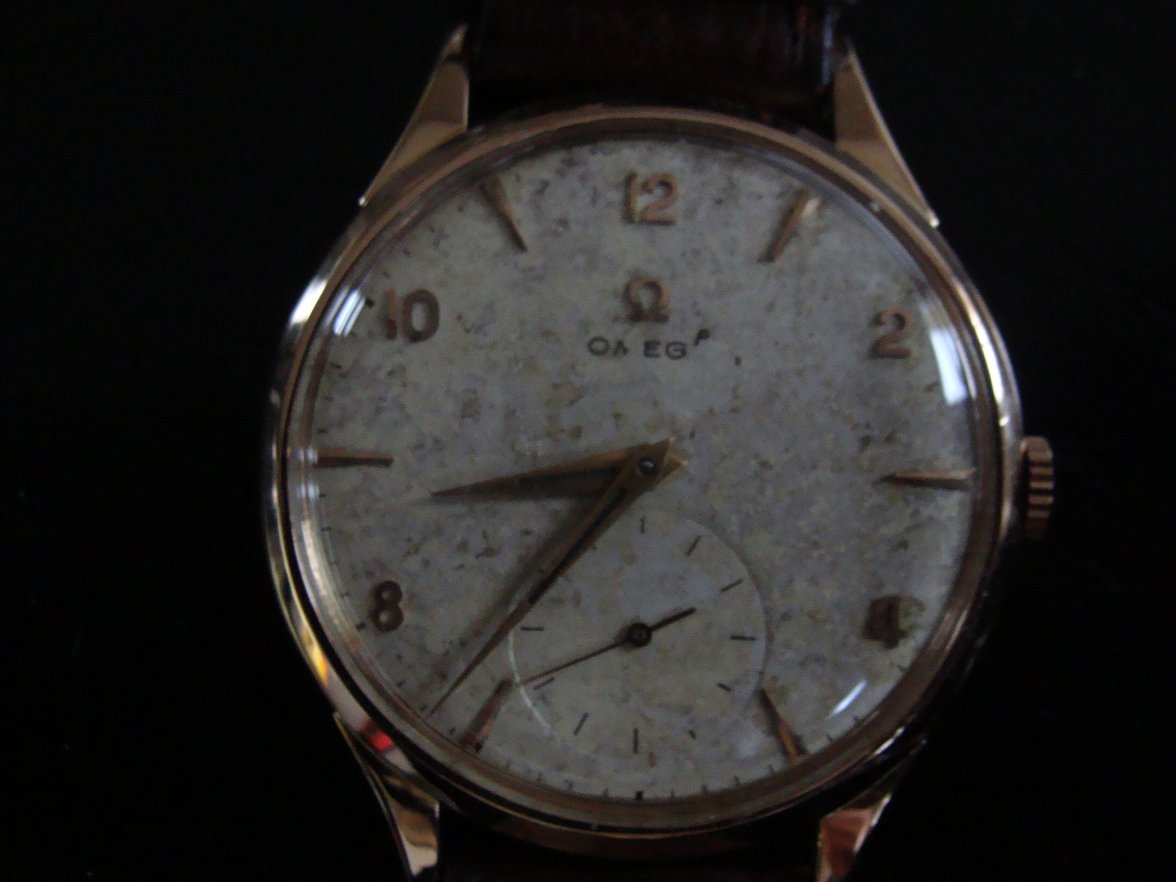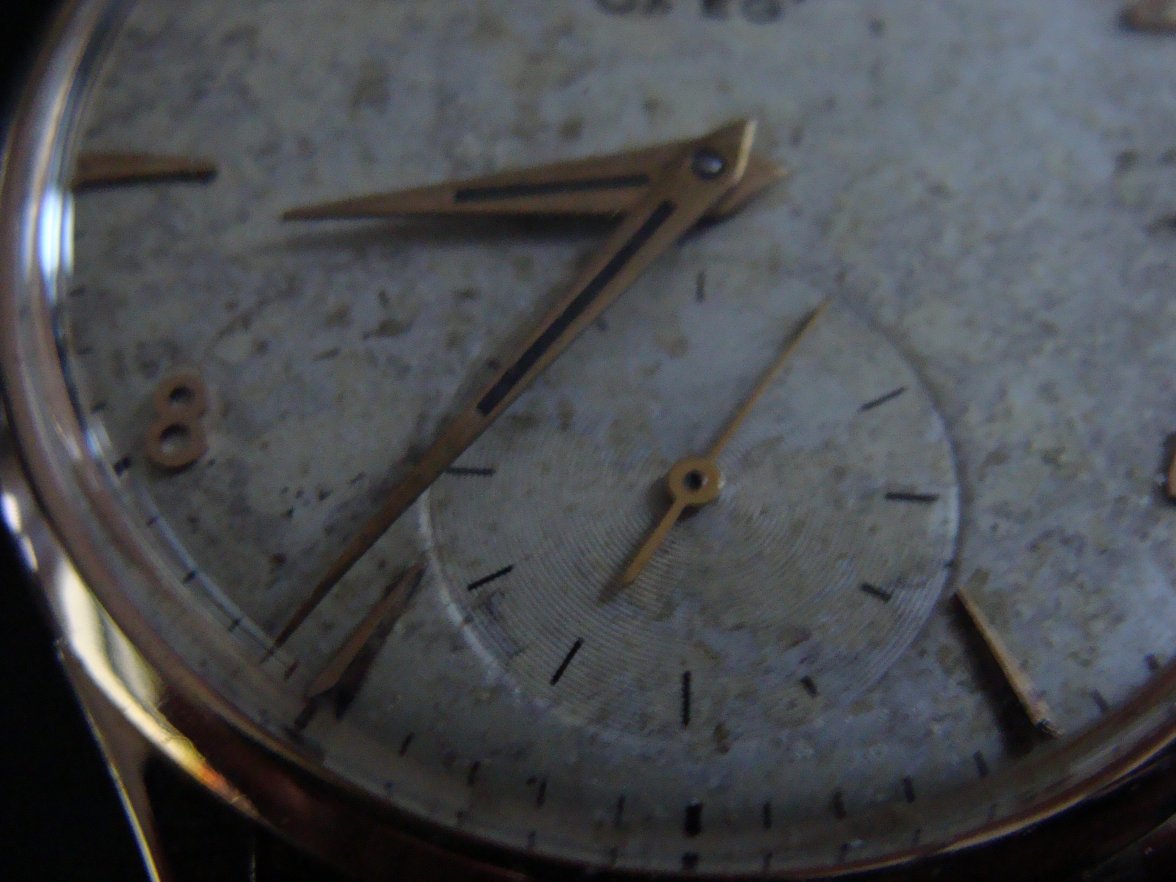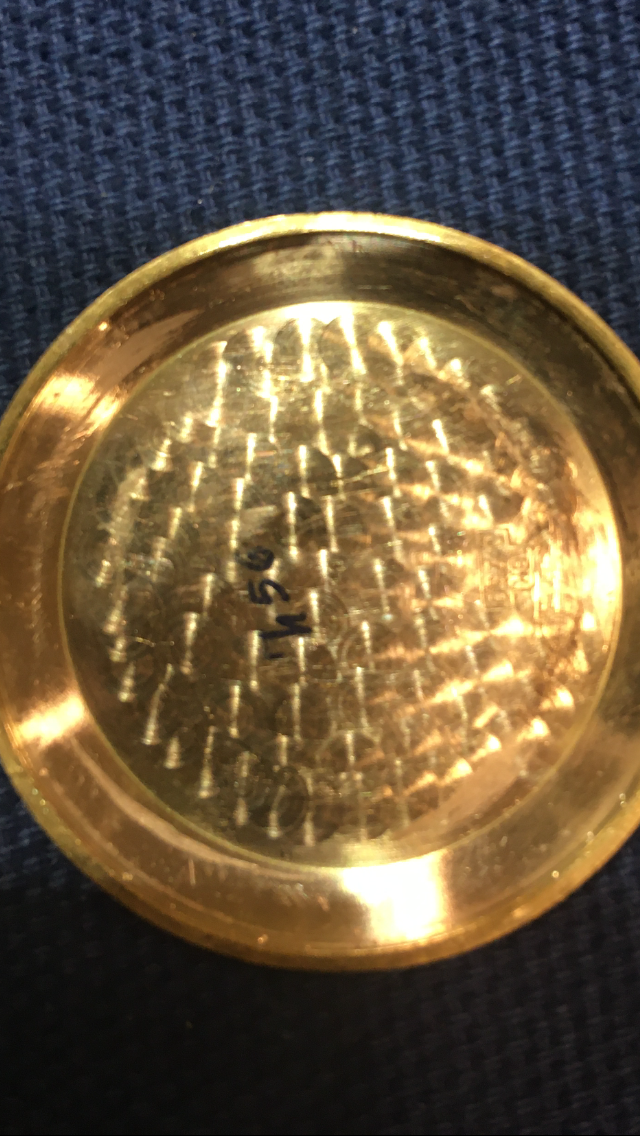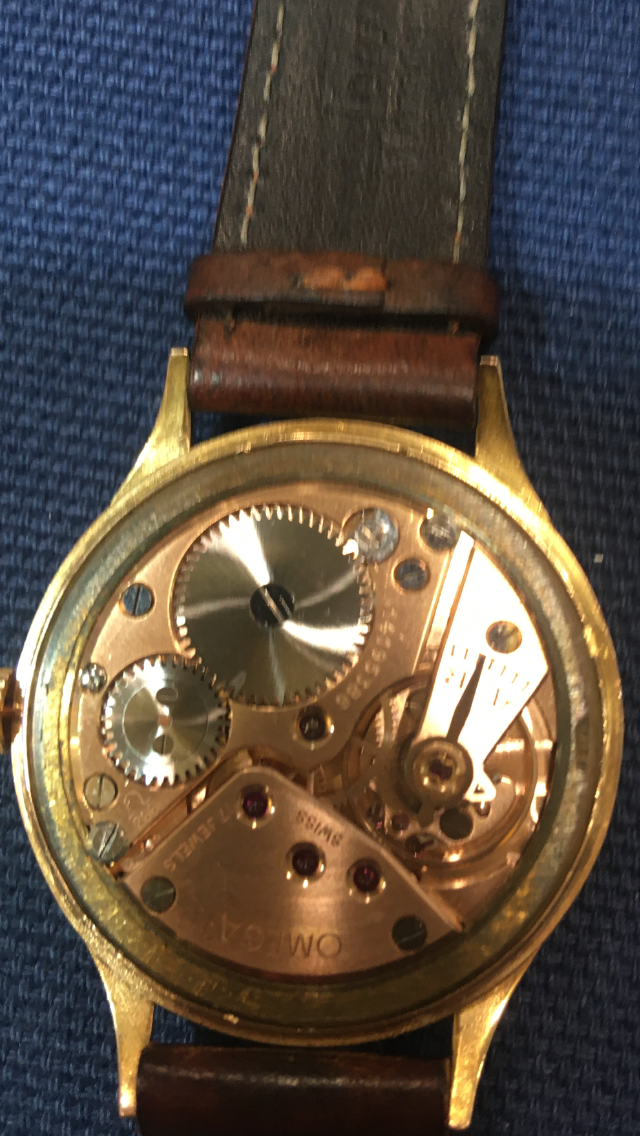Luca1964
·Good morning, I am new and completely neofita, sorry for my no competence.... Have just one question about this Omega gold pink, 34mm, that my father had as gift about in 1953 and left it in a dresser 40 years ago when the glass broked. I have just repaired it by a Rolex official seller that gave me a paper that certificate is original in each part (not the strap) and with guarantee for 2 years. Can anyone give me informations
about the name, the probably date etc.?
The watch is this:
The watch is this:
